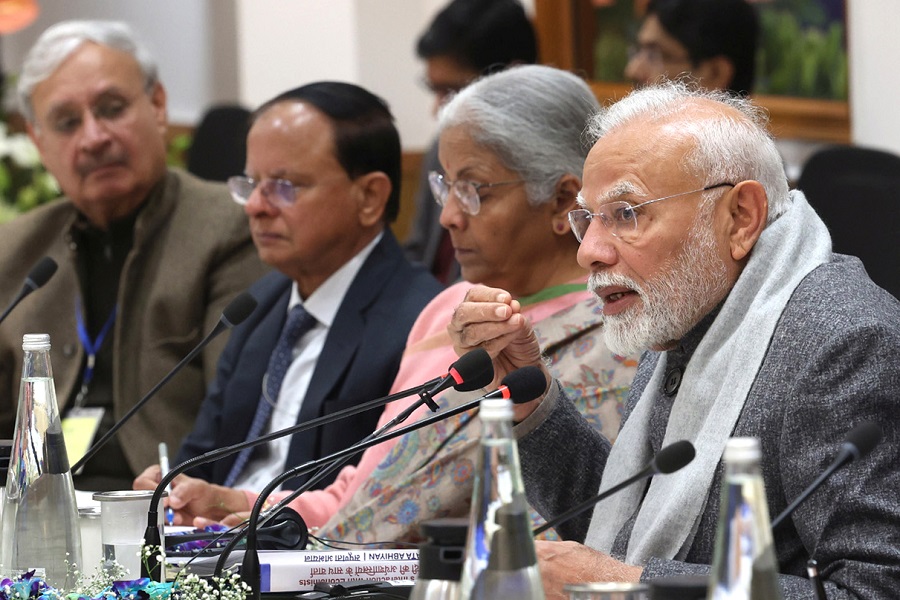Agri Commodity Technical Report 2 May 2024 - Geojit Financial Services Ltd

Follow us Now on Telegram ! Get daily 10 - 12 important updates on Business, Finance and Investment. Join our Telegram Channel
* Farmers in the country have sown summer crops across 6.8 mln ha as of Friday, up nearly 6% from 6.4 mln ha last year, data from the agriculture ministry showed. The acreage under rice, maize, pulses, and oil seeds is higher than last year, despite below-normal rainfall and depletion of water in key reservoirs across the country. But experts say more than usual heatwave days during Apr-Jun are likely to affect the harvest of summer crops. India Meteorological Department today said that heatwave conditions have been prevailing in Odisha and Gangetic West Bengal since Apr 15 and Apr 17, respectively. The weather bureau has also said that a few places in Sub-Himalayan West Bengal, Jharkhand, Odisha, coastal Andhra Pradesh, Yanam, Karnataka, and Bihar witnessed heatwave on Thursday. The weather bureau has said that different parts of the country could see more than usual number of heatwave days during Apr-Jun. It expects 10–20 days of heatwave conditions in different parts of the country in Apr-Jun, compared with the normal 4-8 days. According to the weather office, the areas most prone to experience increased heatwaves are Gujarat, Madhya Maharashtra, Maharashtra, north Karnataka, Rajasthan, Madhya Pradesh, north Chhattisgarh, Odisha, and Andhra Pradesh. The rise in temperature would hurt production of zaid crops, leading to a fall in yield and rise in prices, experts said. Water level across India's 150 primary reservoirs was 53.358 bcm as of today, down 18% from a year ago and 4% from the average of past 10 years, the Central Water Commission said. The current water level is 30% of the total live storage capacity of these reservoirs. Acreage under pulses was up 1% on year at 1.63 mln ha, with sowing of moong rising to 1.33 mln ha from 1.28 mln ha last year. However, the area under urad is down 5% on year to 285,000 ha. The area under rice is up to 3 mln ha from 2.7 mln ha last year. The area under oilseeds has risen to 1.0 mln ha from 971,000 ha last year.
* The Cotton Association of India has retained its projection for the country's cotton output in 2023-24 (Oct-Sep) at 31 mln bales (1 bale = 170 kg), according to a release. The association updates its estimates almost every month, based on information received from its members in 11 cotton-growing states and other trade sources. Production of cotton in the north zone, which comprises Punjab, Haryana, and Rajasthan, is estimated at 4.6 mln bales, up 300,000 bales from last year. As of Mar 31, production in the region was 4.2 mln bales. The estimate for the central zone, which comprises Gujarat, Maharashtra, and Madhya Pradesh, is 18.5 mln bales, down from 19.5 mln bales last year. As of Mar 31, 15.3 mln bales of cotton had been produced in this zone. The estimate for the south zone is also seen lower at 7.3 mln bales compared to 7.5 mln bales last year. As of Mar 31, production here was 6.3 mln bales. Other states account for the rest of the output. The opening stock for the season starting October was estimated at 2.9 mln bales, the association said. The total supply of cotton for the 2023-24 season is estimated at 35.9 mln bales, up from 35.5 mln bales a year ago. The association has estimated imports in 2023-24 at 2.04 mln bales, higher than the 1.25 mln bales imported in 2022-23. Total supply till the end of March 2024 is estimated at 29.7 mln bales. The association has estimated domestic consumption in 2023-24 at 31.7 mln bales, up from 31.1 mln bales the previous year. It pegged exports at 2.2 mln bales, up from 1.6 mln bales the previous cotton season. Consumption till Mar 31 is estimated at 16.5 mln bales.
* The National Agricultural Cooperative Marketing Federation of India has invited bids for the sale of 2,500 tn tur of African origin from its Maharashtra office through e-auction conducted by empanelled service providers, it said in a notification. Individuals or legal entities having the necessary licences for milling and packing are permitted to bid, according to the notification. The minimum quantity for the purchase by interested bidders is set at 50 tn and the maximum quantity is set at 500 tn and price will be quoted on a gross weight basis, it said. "Bidders will have to deposit an amount equal to 5.5% of trade value as EMD (Earnest Margin Deposit& Transaction Charges plus applicable GST) in escrow account provided by service provider prior to bidding," the notification said. The bidding is scheduled from 1100 IST, and the auction session will be open for 30 minutes and there will be three extensions of five minutes each. Bidders have to quote both the price and the quantity intended to purchase before completion of e-auction time. The federation reserves the right to accept or reject any or all bids, including the highest bid, wholly or partially, or counter the bid, including, the right to increase or decrease the quantity, the notice specified.
* India's oilseed production in 2023-24 is estimated at 36.6 mln tn, according to a research paper by India Brand Equity Foundation, a Trust established by the Department of Commerce under the Ministry of Commerce and Industry. Pointing out that India is the fourth-largest oilseeds producer in the world, the paper said the country has 20.8% of the total area under cultivation globally, accounting for 10% of global production. India produces groundnut, soybean, sunflower, sesamum, niger seed, mustard and safflower oilseeds. The major oilseed-producing states are Rajasthan, Madhya Pradesh, Gujarat, Maharashtra, Haryana, Uttar Pradesh, West Bengal, Karnataka, Tamil Nadu, and Telangana. Nearly 72% of the oilseeds area is restricted to rainfed farming done by small farmers, which leads to poor productivity. However, a breakthrough was realised in oilseed production by introducing new crop production technologies and various initiatives like Targeted Rice Fallow Area oilseeds, National Food Security Mission oilseeds, the paper said. The production of oilseeds in India has been growing for the last five years, the report said. In 2022-23, oilseed production was at 41.4 mln tn compared to 38.0 mln tn in 2021-22. The production of oilseeds during 2022-23 was higher by 7.3 mln tn than the average output of 34 mln tn over the past five years, the research paper said. From the year 2015-16 to 2022-23, the compound annual growth rate of oilseed production was 7.3%, it said. During Apr-Feb, India exported oilseed worth $1.30 bln. In 2022-23, oilseeds worth $1.33 bln were exported, which was the highest in the last ten years, the paper said.
For More Geojit Financial Services Ltd Disclaimer https://www.geojit.com/disclaimer
SEBI Registration Number: INH200000345












 320-x-100_uti_gold.jpg" alt="Advertisement">
320-x-100_uti_gold.jpg" alt="Advertisement">











